|
Coborn Road railway station
A long abandoned East London station
(Photos © urban75, September 2010)
Located on the main line out of London from Liverpool Street, Coborn Road station was opened by the Eastern Counties Railway on February 1st, 1865.
Originally named Old Ford and running into Bishopsgate, the line was incorporated into the Great Eastern Railway network after running into financial troubles.
The station was renamed 'Coborn Road' on March, 1879, with the platforms shifting a short distance westward in 1882 across the parish boundary, making the station a resident of Stepney rather than Bow.
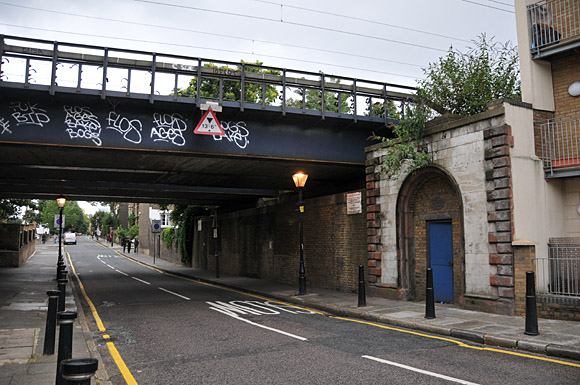
The old Coborn Road railway station was accessed via steps on the right hand side of the bridge.
From here, you could east to Stratford, the next station on the line, or head into central London, with the long vanished Globe Road and Devonshire Street railway station being the next stop on the line.
Post WW1 closure
Coborn Road faced closure in April 1916, with the Great Eastern Railway announcing a programmes of station closures due to staff shortages brought about by losses in the Great War.
Other stations condemned included seven others in the East End: Globe Road, Bethnal Green, Cambridge Heath, London Fields, Leman Street, Shadwell and even Bishopsgate.
With rail fares much cheaper than the alternative bus routes (a bus journey into the City would cost 4d (1.5p) compared to just 1d (0.5p) by rail), there was much local concern.
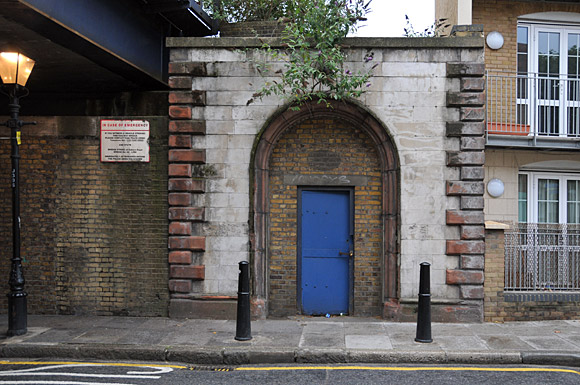
Straus to the rescue
Stepping up to the playe was the former Liberal Parliamentary candidate for Bethnal Green, B Straus, who decided to fight the proposals.
Writing to the East London Advertiser on April 15, 1916, Straus asked if �something cannot be done, before it is too late, to prevent the absolute closing of all the stations on the Great Eastern Railway between Liverpool Street and Stratford.
His letter continued:
If these stations are closed, the hardship to a large number of working people will be a very real one.
I would suggest as a compromise that one or two of the stations might be used during the busy morning and evening hours. Coborn Road, for instance, might be opened and women could collect and check the tickets there if the ordinary staff are not available.
By closing the Great Eastern stations, the grievance will not only be the extra cost, which doubles the original outlay, but the District Railway and the trams are already terribly overcrowded during the morning and evening hours.
I sincerely trust that some action will be taken before it is too late and that, if necessary, the question will be raised in Parliament.
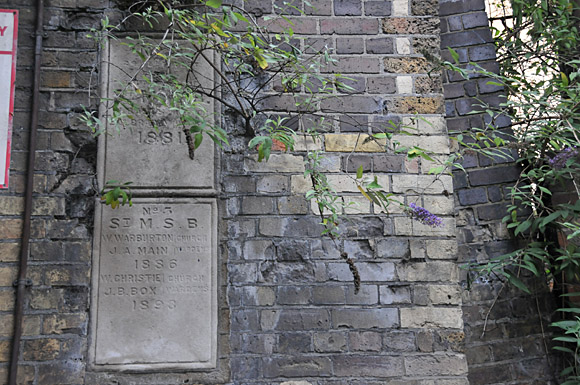
Success
The campaign proved successful, with Coburn Road reopening three years later and continuing to serve the community throughout the 20s and 30s.
However it sounds like it wasn't a place to tarry, with a feature in the East London Advisor (to whom we are indebted for some of the information in this article) recalling a visitor catching a train at Coborn Road and finding the station to be a "dark, cavernous, filthy, dirty place."
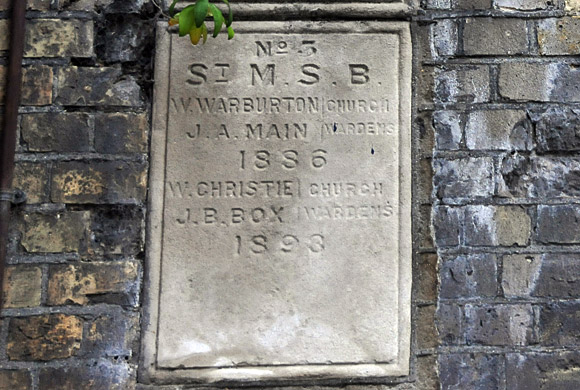
The end
The line eventually succumbed to full closure in 1946, with only entrance facade remaining, and the tracks above bending around a long-gone platform.
Locals are now served by the nearby Bow Road station on the District Line, Mile End on the District line and Central Line and the more recent Bow Church station on the DLR.
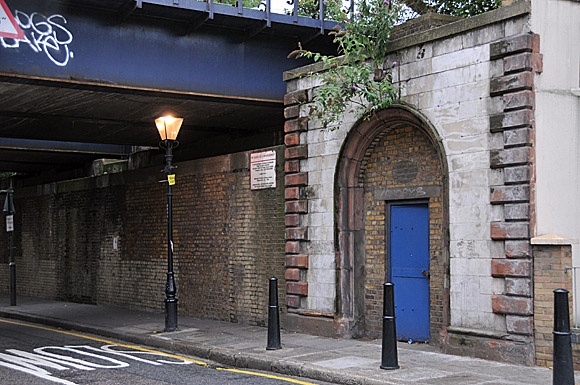
Another view of the entrance.
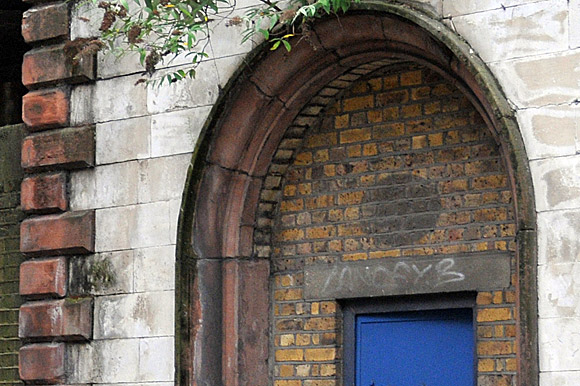
Close up.
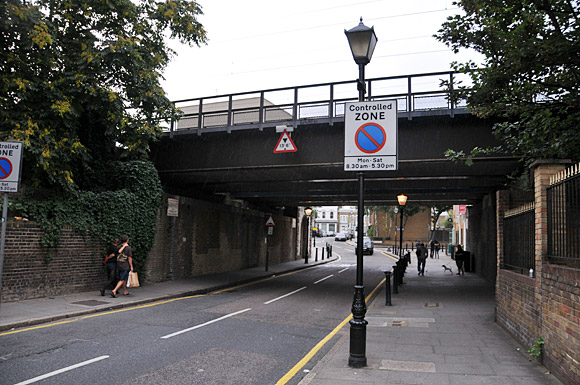
Close up.
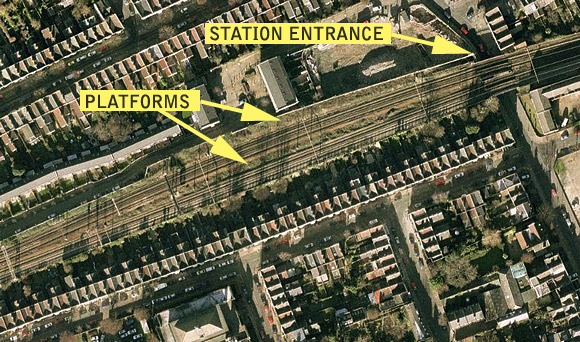
Google satellite view.
View Larger Map

«back to Railways homepage
|

